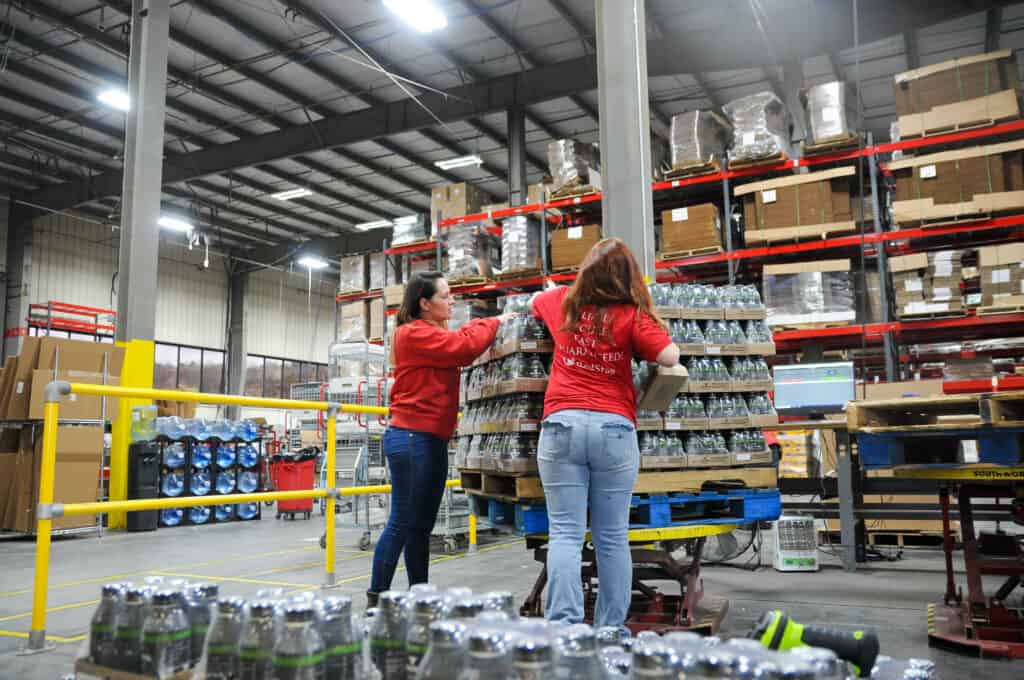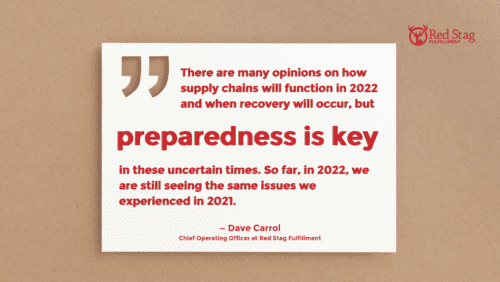Your company’s inventory turnover ratio is an important metric. A simple inventory turnover formula can help you understand and improve your inventory management. When you get clear about your inventory turnover ratio, you can run your business with smaller carrying costs while you optimize your stock levels.

Your inventory turnover rate does reflect whether or not a product is selling well. However, it’s more important as an indicator of how you manage your inventory. And how well you manage your stock levels will make a difference to the long-term success of your company. For example, you might have too much money tied up in inventory. That can reduce your ability to spend on marketing to grow your business. So, understanding your inventory turnover ratio can help you grow your business and increase your profits.
What is inventory turnover ratio?
The inventory turnover ratio is a measure of how quickly products sell once they are placed in stock. The goal is to have high inventory turnover. High turnover indicates that your products are selling well. If your inventory turns over 12 times in a year, that indicates that you sold and replaced your entire stock every month. On the other hand, your stock might take a whole year to turn over. That’s a sign that your sales are less than expected or that you ordered too much at once.
If this sounds confusing or vague, don’t worry; it isn’t. Calculating your stock turnover ratio will give you clear direction on how much to order. In fact, you might want to look at past inventory turn rates and compare them to your current inventory turnover ratio. This can help you spot trends and assess the health of your business.

Inventory turnover ratio glossary
Before we dive into the inventory turnover formula, it’s helpful to define some inventory terms.
Average stock
Average stock is also called average inventory. It is the average amount of inventory carried during a certain time period. Your average inventory is the average of your starting and ending stock levels for the period. You need to calculate your average stock before you can figure out your inventory turnover ratio.
For example, let’s say you started the quarter with $1,000 worth of giant stuffed bears in stock. You don’t restock during the quarter. At the end of this period, you have $200 worth of stuffed bears left.
Your average inventory calculation would look like this:
($1,000 + $200)/2 = $600
You add beginning and ending stock levels and then divide by two. In this case, the average amount of inventory that you carried during the quarter is $600.
Your average inventory includes only the items you have in stock in your warehouse. If you drop ship some items, don’t count those items in your average inventory. You don’t pre-purchase drop shipped products, so you don’t have to invest in these items. Only inventory that you have purchased will factor into your inventory turn rate.
Cost of goods sold (COGS)
Cost of goods sold is the cost of everything that goes into making your products. This includes variable costs that will go up or down depending on how much you sell. Variable costs include raw materials, manufacturing, and transport of goods to the warehouse. Fixed costs such as storage and other overhead aren’t included in the cost of goods sold. Also leave out expenses such as marketing that don’t relate directly to manufacturing.
Cost of goods sold is also called cost of sales. To calculate COGS, subtract the value of your inventory at the end of the time period from the starting inventory value. In the case of the giant stuffed bears, COGS is $800. That’s $1,000 starting inventory minus $200 inventory at the end of the period.
You can calculate your inventory turn ratio using COGS or sales figures. Most businesses use COGS rather than sales. COGS gives you a more accurate picture of the funds you have tied up in inventory.

Days sales in inventory (DSI)
Days sales in inventory (DSI) is also known as turnover days or days inventory. It is a measure of how many days it takes you to sell through your inventory. You can calculate your turnover days by dividing average inventory by COGS and multiplying by the number of days in the period.
Going back to our giant bear example, the formula for DSI looks like this:
($600/$800) x 91.25 [days in a quarter] = 68.43 days to sell the average inventory of stuffed bears

How to calculate inventory turnover
The cost of goods sold divided by average inventory equals the inventory turnover ratio.
For our stuffed bear example, the calculation would look like this:
$800/$600 = 1.3
The inventory turn rate for the quarter was 1.3. In other words, 1.3 times the average inventory sold during this quarter.
Extrapolating for the whole year, we can calculate the number of times this seller turns over their inventory of giant bears. To start with, we will assume that the COGS is the same every quarter. We multiply $800 x 4 to get $3,200 annual COGS. The average inventory number stays the same.
Here’s the annual formula:
$3,200/$600 = 5.3
The stuffed bear seller’s inventory turns over their average $600 inventory 5.3 times a year. That’s not bad, but they might want to place smaller orders so they have less money tied up in stock.
The higher your inventory turnover ratio, the quicker your stock turnover time. In our example, the turnover rate is a bit more than two months. It takes the seller about 10-11 weeks to sell through the inventory of stuffed bears.
It’s important to calculate the stock turnover ratio for each SKU separately. That will help you weed out slow-moving items and focus on your bestsellers.
Interpreting you inventory turnover ratio
What is a good inventory turnover ratio? To figure out your ideal inventory turnover ratio, look to other businesses in your sector. Some products require a high turnover rate while others necessitate lower turnover.
For example, if you sell clothing that might go out of fashion, you should aim for a high turnover ratio. You probably want to sell through your stock of clothing each season, if not more often. You might even have sales to liquidate stock before it’s outdated. Those liquidation sales will increase your turnover ratio.
On the other hand, if you sell a durable product, your stock turnover ratio will probably be lower. The fact that washing machines, for example, sell more slowly than the latest fashion doesn’t mean you’re doing anything wrong. Your business might require a larger capital investment to keep the right amount of stock on hand.

There can be downsides to a too-high inventory turnover rate. If your inventory turns too quickly, you might not be ordering enough to restock. You could end up with too little product on hand to meet demand. It’s important to find your Goldilocks inventory turnover ratio: not too low, not too high.
The inventory turnover ratio is a data point that will help you manage your inventory and cash flow. It’s important to consider it in the context of your business as a whole. If you need help calculating your stock turnover ratio, ask your eCommerce fulfillment company for assistance.










